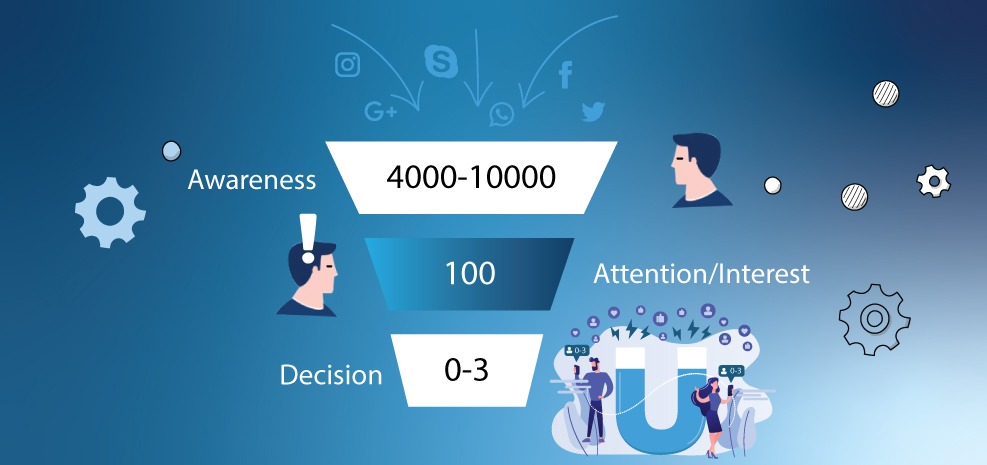In this noisy world, we entrepreneurs are struggling for one single thing.
Can you guess what it is?
Is it your product? Is it your marketing? Your sales or your finances?
The fact is, while these challenges are there but every business’s success or failure starts with one single hurdle: Getting attention!

Yes, this is the attention age we are living in. We might build a great product and spend millions on ads, but how do we cut the clutter and reach the bottom of the pyramids where decision-making happens?

According to a Red Crow Marketing article, digital marketing experts estimate that an average internet user is exposed to around 4,000 to 10,000 advertisements daily. This includes all forms of advertisements, such as print ads, brand labels, Facebook Ads, Google Ads, and ads on your phone. A Forbes article also supports this claim. However, due to a screening process we’ve developed to maintain our sanity, less than 100 of these ads make it past our “attention wall” each day, and we start ignoring brands and advertising messages unless it’s something that we have a personal interest in.

One of the key skills every entrepreneur must possess is the ability to craft a magnetic message that cuts through the noise and grab the attention of their target audience by their shoulder. In this attention economy, where thousands of ads are seen daily, persuasive writing is crucial. By focusing on the most essential content and being precise, you can rise above the clutter and stand out.

Persuasive writing’s real power is like Earth’s gravity—it quietly pulls you in. As per a study which was commissioned by Microsoft and discussed in Time magazine in 2015, the average human attention span is a mere 8 seconds, a significant drop from 12 seconds in 2000, making it even shorter than that of a goldfish. In this fast-paced, attention-deficit era, persuasive writing is the lighthouse that guides your readers through the stormy sea of content overload.

By crafting a magnetic message that celebrates your unique offering—much like how Apple’s “Think Different” campaign did in the late 90s, transforming the company’s image from a struggling computer manufacturer to a beacon of creativity and innovation —writers can ensnare the minds of their audience, keeping them captivated and engaged.
Effective persuasive writing is an art of precision—like a master sculptor, you must chisel away the extraneous information, leaving behind only the most potent points. For instance, in the world of marketing, Pareto Principle, also known as the 80/20 rule, shows that 80% of your results often come from 20% of your efforts. This principle can be applied to your writing—ensure that the crucial 20% of your content packs the most punch, leading your readers on a journey of discovery and ending at a crossroads, allowing those who don’t align with your message to naturally filter out.

With a blend of power-packed sentences, engaging visual narratives—akin to the memorable visual storytelling of brands like National Geographic—and a deep, clear articulation of ideas, persuasive writing becomes a potent tool to win over your audience in this information-saturated world.

